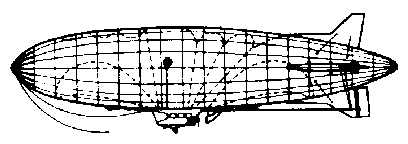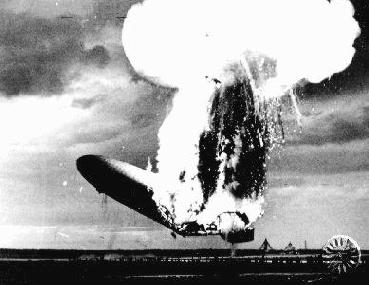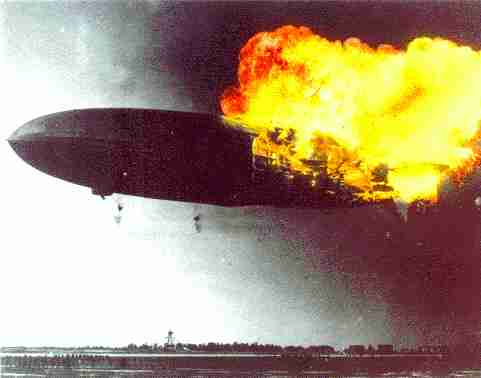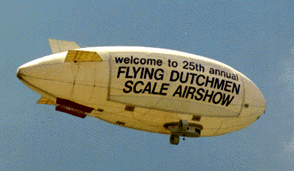
TABLE OF CONTENTS
For those of you blockheads who wanna skip all the boring writing and stuff and just wanna see our pretty pictures, well, here ya go
Click here to see llama porn!!!


TABLE OF CONTENTS
For those of you blockheads who wanna skip all the boring writing and stuff and just wanna see our pretty pictures, well, here ya go
Click here to see llama porn!!!

The Earth
is the source of all life as we know it. However, for some reason, we are
captivated with the idea of leaving it, in separating from the great Earth-Mother
from which we are children. Moreover, this captivation can be an environment
for a sort of natural selection among nifty physics equations, by which
there are situations and devices by which their inventors may fly, and
situations and devices by which the inventor becomes permanently lodged
in the side of a mountain, thus removing him as a force from the environs
of theoretical flight. Two such inventors come forward to tell the touching
story of a dream, a blimp, and a whole lot of gas.

NAZIs + Hydrogen = good home cookin'
Designs began to surface, and these designs were not only for balloons as modes of travel. I began to wonder if it was possible to create a parachute using a canister of pressurized gas and a large balloon, so that it would slow one’s descent and enhance their jumping prowess. However, once I had done the math, I quickly found out that this was unfeasible.
The equation used was the fundamentally simple but extremely practical principle of buoyancy which states that the buoyant force is equal to the weight of the displaced fluid. At this point, I must thank Mr. Murray for showing me how to correctly utilize this formula. Mathematically, it appears as such:
Fb = r fVg
Where Fb is the buoyant force; r f is the density of the fluid; V is thew volume of fluid displaced and G is the acceleration due to gravity. By this formula, it requires something like ninety cubic meters of helium to cause an object weighing one hundred kilograms to become effectively weightless. This is a very large amount of gas, however, and it should be readily apparent why such a "parachute" device, as described before would end up being quite a cumbersome affair.
In order to best capture the gas, my initial design was that of a spherical balloon, with cables coming down off of the balloon to a passenger basket. Then, there would be an engine on a swivel mount, capable of providing thrust in any direction. The direction and angle of the engines could b controlled by the user by means of a rope.
This design proved to be useless
after it was realized that the control system was fundamentally flawed,
and that the engine might not function properly, which is to say, instead
of pushing on the blimp, it would end up pushing on the basket, which is,
largely, a less effective way of doing the business of propelling the balloon.

While originally I had thought that the sphere, which its high volume versus its relatively low surface area, would be an ideal shape, to keep the total construction weight of the apparatus low, but when redesigning it, it seemed best to opt for a more conventional cigar shape, largely because of the aerodynamics of the structure that would have to be placed on the bottom. Such a shape would make it easier to build a rigid "cage" around the balloon, or to make the usage of strings easier. It is a more stable shape, and less likely to rotate around its center during a vectored thrust maneuver.
Yet, this did not solve all the problems. In fact, it created new ones. How would it be possible to control the engines? What would be the most useful shape for the gondola of the blimp? Where can the engines be mounted such that they can receive enough air from all directions to effectively vector thrust without endangering the user of the envelope of the balloon?
Finding the proper shape and designing effective engine mountings was a arduous process of trial and error. Most commercial blimps use flaps to control direction, but I wanted the versatility of vectored thrust. I went over dozens of designs in my mind, and none of them seemed to work at all. All these designs seemed arbitrary, with no reason for the shape of size that things would end up being.
Some of them had the balloon underneath the gondola, but this type of construction would be prone to flipping, even with wings, the use would need to exercise caution in order to keep the blimp upright. While a large gyroscope could solve this problem, it would also contribute to the weight and subsequent size of the balloon without providing any real advantages.
Finally, a satisfactory shape that fulfilled all the criterion was developed. It ended up being a cigar shaped balloon with a bottom mounted gondola, with twin engines that could be given three types of imput: vertical rotation, horizontal rotation, and variable thrust. The seat simple, the engines were side mounted, as to give maximum air flow as well and adequate control. Overall the problems were solved by a solution of resounding simplicity. I rendered the finished design using a raytracer to get an exact feel for the dimensions of the thing, rather than trusting my sketches. However, one ultimate and final problem remained insurmountable; the price. Such a balloon would cost thousands of dollars to manufacture. However, I saw the possibility of a smaller balloon, just to test the theory.

"No," sayeth the Blimp Fairy "Thou cans't build thy balloon! Thou art indeed a silly monkey!"
The one problem with this is that few substances will readily stick to mylar. Because it was absolutely critical that there would be no gaps to allow for the gas to escape, the method of sealing the mylar was of utmost importance. The best way to try and seal it, James and I reasoned, would be to avoid glue and tape, substances which would likely allow leaks. Instead we attempted to melt the mylar together using a simple iron.
James and I went on the melt together the three sides of the mylar, creating a balloon. In certain spots we also used Scotch tape to supplement the structure. When we tested this, however, by blowing air though it via a vacuum pump, it because apparent that this balloon would not work; melting was not a good idea. There was simply too great a propensity for holes to appear.
The next problem we had to tackle was about the gas we were intending to use. The two options that initially presented themselves were hydrogen and helium. Hydrogen, the gas that rocketed the Hindenburg to glory, was lighter than helium and would therefore posses a greater lift. Helium was weaker in that regard, but it could more easily be acquired. Undaunted by extra work and feeling that time was still plentiful, James and I figured out how to create hydrogen gas.

"Damn it, how many times do I have to tell you people…NO SMOKING ON THE BLIMP!!!!"
The first process we planned involved extracting hydrogen from a platinum wire using a fairly simple chemical process. However, when that idea fell through (due to certain errors) we had to turn to another chemical process to create the gas. Luckily, we discovered the two chemical equations below:
3NaOH + Al -à 3Na + Al(OH)3
2Na2 + HO2 --à Na2 O +H2
So one can see that by combining
Aluminum with NaOH (lye) and H2O one can produce among other byproducts,
hydrogen gas. In experiments, James and I observed that the reaction also
required some amount of activation energy The lye and aluminum foil would
only interact when the water we mixed it with was fairly hot. The one thing
that James and I noticed was that the reaction also created a lot of heat;
the plastic coke bottles that we tested in both melted. Besides hurting
our hands, this effect presented some problems. The primary problem was
that it may pose a threat to our intended system of getting the hydrogen
into the balloon.
The heat produced by the reaction, however, was in danger of melting not only the container in which we placed it in but also the tubing intended to carry the hydrogen into the balloon.
Then James and I thought up another problem that might jeopardize the hydrogen production. While we successfully get hydrogen gas to rise, we realized that water vapour, which came from water melted by the heat produced by the reaction, was also escaping from the container. We proved this by holding up a metal spoon above the container and seeing the con6densation form. If we were not able to place pure hydrogen into the balloon, then it would be weighed down and might not float. So James and I abandoned the hydrogen idea and turned our attention to the glorious 2nd element: helium. Helium, while weaker, presented virtually none of the problems that hydrogen did. The process for getting the gas into the balloon would remain virtually unchanged as in fig 3, with the plastic hose connected to the nozzle of a helium tank which can be bought our found.

"You know, Sam, I've been working here forty years and I still don't know why the hell it does that."
Now the final issue was to get another
balloon and figure out how to connect it. By making inquiries at the plastic
store where we received the mylar, we decided that the best way to assemble
the balloon would be to use 3M Spray-on adhesive. Indeed, it proved successful.
Two of the sides were glued so well that later, when completely filled
with helium, neither leaked. The third required a lot of Scotch tape to
prevent total leakage.
With this balloon, James and I decided to do a few more experiments. We’d already almost exhausted our scientific drive by all the difficult thinking and experiments we’d done to complete the balloon. We had already expanded the horizons of physics forever. But we were determined to press on.
The first idea we tested was Archimede’s principle. In another galaxy long, long ago, Archimedes stated that any bag of gas which was lighter than air would rise and carry mass according to the formula
M= (D1-D2)V
Where M is the mass, D1 is the density of the gas around the balloon, D2 is the density of the gas in the balloon, and V is the volume of D2 gas.
Now we know that the density of air is 1.2 kg per cubic meters, and helium’s density is .12 kg per cubic meters. By measuring the balloon, we figured that the volume of gas was .53 cubic meters (we determined that the balloon was most like a cylinder, and multiplied pie by its radius squared and by its height). Doing all that math, we figured the mass that much helium could produce as .54 kg. By weighing the balloon, we calculated the mylar as weighing at .3 kg, which would mean the balloon could lift that and .24 kg to spare. However, when testing that, we found that the balloon could not hold the bottom we constructed for it out of basswood, which weighed slightly less than .1 kg. In fact, it would not even lift a single piece of basswood which was barely 20 grams. Something was wrong with our balloon. When it should have achieved neutral buoyancy with the air outside, it had a negative buoyancy. Some possibilities are that we miscalculated the volume of the balloon or that some of the helium leaked out in places we could not detect. A third explanation is that the balloon had added mass because of the glue and tape we added to it, which was not included in the weighing. All of these could have contributed to make our balloon heavier than we thought. So we haven’t necessarily disproven Archimede’s principle. The results were inconclusive to do failures in data taking. It will take another to determine whether or not this ancient genius was correct.

When blimp pilots decide to play
chicken while drunk

The hidden meaning behind this is
obvious -- this is a call for the highly illegal sport of dwarf tossing.
Because our site might not be the greatest in the world, here's some links to others that can fill you in on the wonders of blimposity: